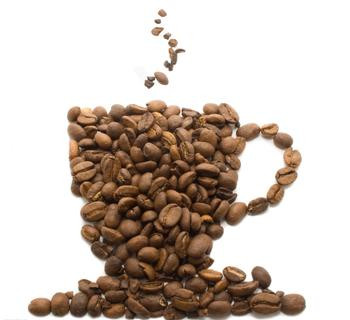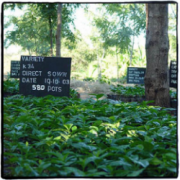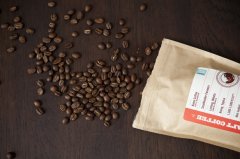Coffee knowledge collection
The third wave of six evolutionary elements:

1. Attach importance to the flavor of the region
The second wave of coffee people are used to describing coffee flavor in terms of producing countries. however, there are dozens of coffee varieties and different climates and soil and water environments in the same country, so it is not necessary to buy the right varieties and soil and water in the right country. Only the country of origin is used to discuss the general roughness and unprofessionalism of coffee flavor. The third wave uses more specific producing areas, manors, latitudes, elevations, treatments, microclimates and varieties to discuss the tastes of different regions. Attaching importance to the knowledge of coffee varieties and soil and water is the third wave and the first major evolution.
two。 Avoid re-baking and then bake lightly.
In order to show the regional flavor of different soil, water and varieties of each manor, the baking degree of the third wave operator has also been revised from re-baking to shallow baking, medium baking or medium-deep baking, rarely to the second explosion intensive stage, and will come out at most from the second explosion, or even earlier, so as to avoid excessive carbonization and cover up the smell of the region. Therefore, reducing the degree of baking to shallow baking to interpret the bright and lively sour fruit notes of fine beans is the third wave and the second largest evolution.
3. Attach importance to the treatment of low pollution
In order to reduce river pollution, no longer adhere to the better dogma of washing beans with water, and then improve the treatment method that does not require water consumption, so that the methods of sun exposure, semi-washing, honey treatment, and wet planing are very popular, which not only expands the diversity of coffee taste spectrum, but also protects the environment. Sustainable management is the third wave and the third evolution.
4. Filter black coffee has become the mainstream
With espresso as the bottom, Italian coffee such as latte and Cabo with fresh milk and foam is the second wave of main drinks, but the third wave vigorously promotes the original black coffee without sugar and milk, using Japanese, European and American hand brewing and racing style or desktop smart filter cups, which were once regarded as vulgar follicular punches, but they are the most natural extraction method without external interference to let the coffee speak for itself.
5. Direct baking plant of origin
The second wave of vigorously promoted fair trade system is riddled with drawbacks, and coffee farmers are still exploited by middlemen. The third wave of bakers traded directly and went to various producing areas to find good beans, so as to help farmers understand the quality requirements of the boutique market, and then improve the quality, sell them directly to bakers at better prices, and avoid exploitation by middlemen. Increase farmers' income, so as to cultivate the friendship between the two sides, form a positive interaction between the producing area and the consumer country, and the relationship between the roaster and the coffee farmer is closer.
6. Scientific interpretation of Coffee Aesthetics
The second wave of coffee people are used to using subjective rules of thumb to describe the extraction, roasting, cultivation and processing of coffee, but the third wave is supplemented by more accurate scientific research data to explain the coffee industry. the contents of sucrose, organic acids and aromatic components of all coffee varieties are compared with scientific data. The chemical changes in roasting and extraction are also explained by scientific theory, and even the abstract coffee concentration is presented as a specific numerical value. It is the third wave and the sixth evolution to study the upstream, middle and lower reaches of coffee as an aesthetics, and pay attention to the scientific research of seed selection, cultivation, treatment, cup measurement, roasting, extraction, concentration and extraction rate.
Important Notice :
前街咖啡 FrontStreet Coffee has moved to new addredd:
FrontStreet Coffee Address: 315,Donghua East Road,GuangZhou
Tel:020 38364473
- Prev

Zambian Coffee introduction
Zambia began its history of coffee cultivation by introducing bourbon coffee from Kenya and Tanzania in 1950. Zambian coffee has a brightness similar to that of Kenyan coffee, but it is more subtle, complex and well-balanced.
- Next

Five key steps in making coffee
1. Storage temperature when your coffee beans need a storeroom, long-term storage will slowly reduce the flavor of coffee beans. But most importantly, do not use cold or frozen methods to store your coffee beans, drastic temperature changes will greatly damage the taste and aroma of coffee beans. two。 Freshly ground a good cup of coffee must use freshly ground coffee powder, because once coffee
Related
- Beginners will see the "Coffee pull flower" guide!
- What is the difference between ice blog purified milk and ordinary milk coffee?
- Why is the Philippines the largest producer of crops in Liberia?
- For coffee extraction, should the fine powder be retained?
- How does extracted espresso fill pressed powder? How much strength does it take to press the powder?
- How to make jasmine cold extract coffee? Is the jasmine + latte good?
- Will this little toy really make the coffee taste better? How does Lily Drip affect coffee extraction?
- Will the action of slapping the filter cup also affect coffee extraction?
- What's the difference between powder-to-water ratio and powder-to-liquid ratio?
- What is the Ethiopian local species? What does it have to do with Heirloom native species?

